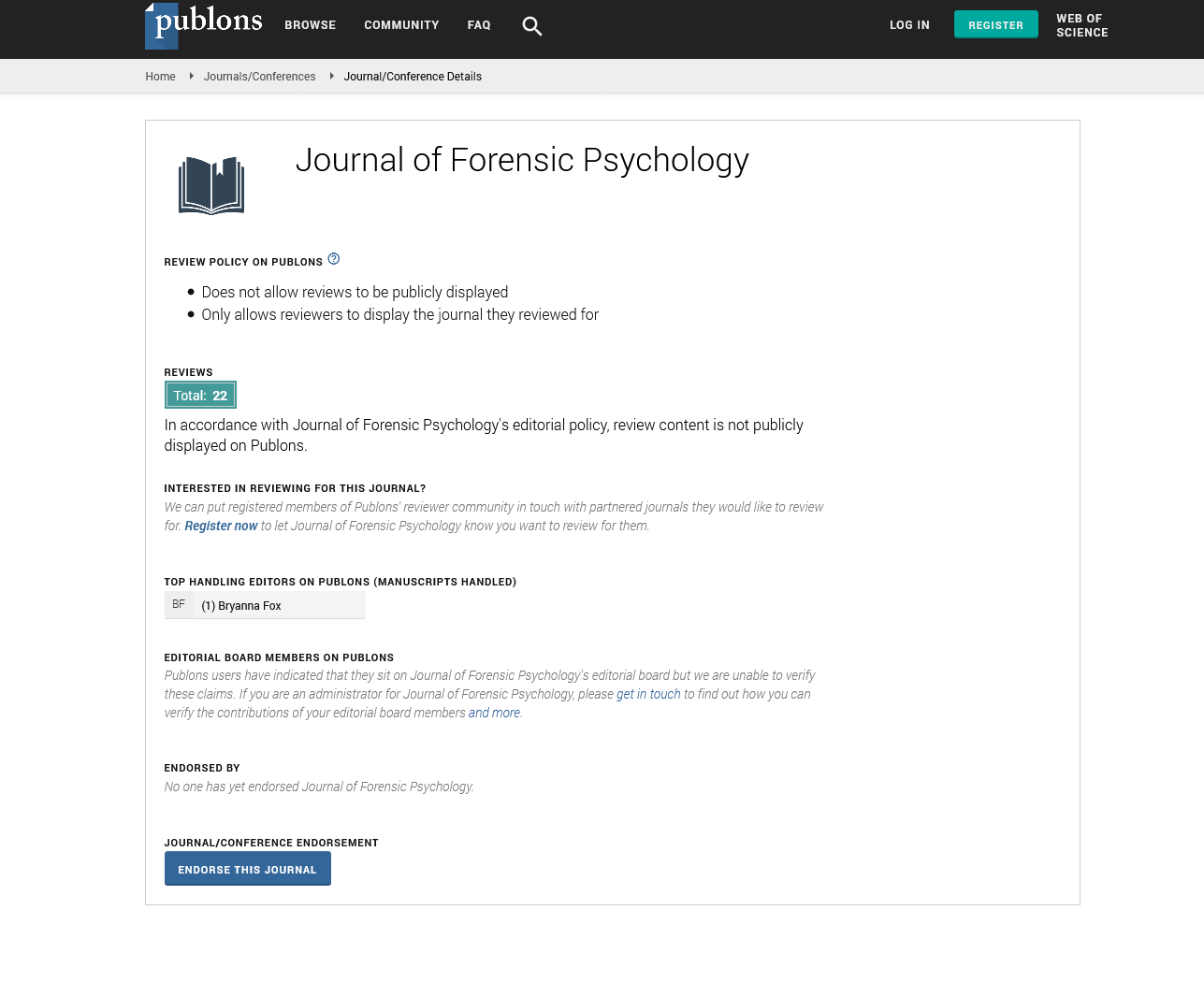Indexed In
- RefSeek
- Hamdard University
- EBSCO A-Z
- Publons
- Geneva Foundation for Medical Education and Research
- Euro Pub
- Google Scholar
Useful Links
Share This Page
Journal Flyer

Open Access Journals
- Agri and Aquaculture
- Biochemistry
- Bioinformatics & Systems Biology
- Business & Management
- Chemistry
- Clinical Sciences
- Engineering
- Food & Nutrition
- General Science
- Genetics & Molecular Biology
- Immunology & Microbiology
- Medical Sciences
- Neuroscience & Psychology
- Nursing & Health Care
- Pharmaceutical Sciences
Short Communication - (2021) Volume 6, Issue 7
Alzheimer’s in Down Syndrome Patients
Lisa Jones*Received: 06-Jul-2021 Published: 27-Jul-2021, DOI: 10.35248/2475-319X.21.6.182
Introduction
Alzheimer Disease (AD) may be a neurodegenerative which shows cognitive and behavioral impairment that significantly interferes with social and occupational functioning. It’s an unpreventable disease with an extended preclinical period and progressive course. In AD, clots develop within the hippocampus, a structure deep within the brain that helps to encode memories, and in other areas of the cerebral mantle that are involved in thinking and making decisions.
Individuals with mongolism, or mongolism, develop a syndrome of dementia with clinical and neuropathology characteristics almost just like those of AD as described in individuals without DS [1].
Aging in DS occurs in many other systems and is not limited to the Central Nervous System (CNS) alone. The popularity that DS is related to mongolism helped within the understanding of the genetic basis of this association.
The neuropathology of Alzheimer disease patients with Down Syndrome (DS) compared with autopsy studies in persons with DS showed that nearly all had brain lesions meeting the standards for AD [2].
Clinical Presentation
This progressive neurodegenerative disorder affects multiple components of the CNS. The signs and symptoms are an expression of continuous progressive neuronal dysfunction and death.
One of the foremost sensitive and specific symptoms of Alzheimer Disease (AD) in people without mongolism (DS) could even be a decline within the patient's ability to perform cognitive tasks associated with employment, shopping, or household finance. When individuals with DS are employed or performing complex tasks with a particular degree of private autonomy, noticing early signs of the disease won't be difficult. Because most people with DS have retardation, a history of decline in high-level premorbid cognitive abilities is typically difficult to document. For this reason, on the average, approximately 1-2 years elapse between the first signs of the disease and therefore the confirmation of the diagnosis [3].
Early stage
Symptoms are confusion, disorientation, and wandering. In most cases, these early signs aren't recognized and commonly are misdiagnosed. Studies showed progressive cognitive decline and subtle amnesia as early symptoms, which are related to deficits in visuospatial organization [4].
Behavioral changes include the following:
• Deficits and variability in tests of selective could be a subtle early sign of AD which will be documented by a comparatively easy test.
• In the first stage of the disease, behavioral changes are the foremost common sign; these changes are usually considered an exaggeration of long-standing behavioral traits.
Middle stage
The patient may depend completely on others for activities like dressing, eating, walking, and toilet needs. Communication skills also are reduced markedly; speech and language, if present, aren't used efficiently. Behavioral problems are exaggerated, psychotic behavior could also be displayed, and social activities are reduced to a minimum.
Advanced stage
Patients are almost at a vegetative level, being totally hooked in to others and interacting minimally with the environment.
Motor disorders
These patients may also present with a progressive gait disorder and, in some patients, a Parkinson syndrome. In very advanced stages, the patient is confined to bed with marked rigidity and tiny voluntary movement.
Conclusion
At present, there's no known method or treatment for the prevention of AD. Some studies have evaluated the importance of lifestyle, diet, and other risk factors. Trials are performed with NSAIDs, estrogens, vitamins E and C, and beta-carotenes, but there's no clear evidence of positive results. Good medical care is required to stop complications (ulcers, aspiration pneumonia).
REFERENCES
- Zigman WB, Devenny DA, Krinsky‐McHale SJ, Jenkins EC, Urv TK, Wegiel J et al. Alzheimer's disease in adults with Down syndrome. Int Rev Res Ment Retard. 2008. 36:103-45.
- Mann DM, Yates PO, Marcyniuk B. Alzheimer's presenile dementia, senile dementia of Alzheimer type and Down's syndrome in middle age form an age related continuum of pathological changes. Neuropathol Appl Neurobiol. 1984. 10(3):185-207.
- Burt DB, Loveland KA, Primeaux-Hart S, Chen YW, Phillips NB, Cleveland LA, et al. Dementia in adults with Down syndrome: Diagnostic challenges. Am J Ment Retard. 1998. 103(2):130-45.
- Evenhuis HM. The natural history of dementia in Down's syndrome. Arch Neurol. 1990. 47(3):263-7.
Citation: Jones L (2021) Alzheimer’s in Down Syndrome Patients. J Foren Psy. 6:184
Copyright: © 2021 Jones L. This is an open-access article distributed under the terms of the Creative Commons Attribution License, which permits unrestricted use, distribution, and reproduction in any medium, provided the original author and source are credited.

